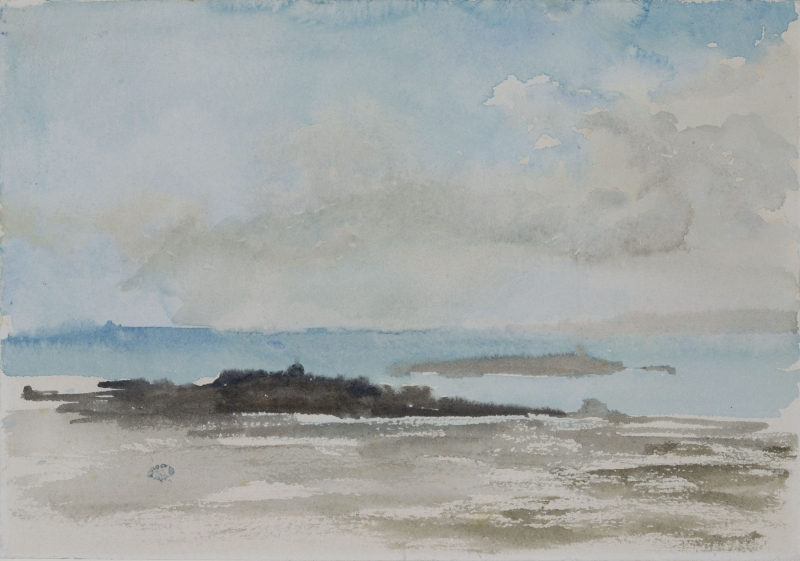Technique
The 1995 catalogue describes it:
'A sparkling watercolour, the distant low-lying land painted as delicately as a cobweb strung across the page... A rain-washed sky (the sheet is speckled with drops of water) merges with the sea at the horizon. The black and grey of the rocks and grey of the sky runs into the sea. Intricate wave patterns wander down into the dark rocks. A scrapy scumbling of grey and brown paint over the beach provides a strong foreground. ' 1
The Terra Foundation website comments:
'Deserted beach, rock outcroppings, ocean expanse, and cloud-filled sky are described in a loose, rapid technique ranging from the dry-brushed foreground grays to the liquid color of the sky, where drops of rain apparently speckled the paper after Whistler applied the watercolor, blurring the horizon line. Whistler evoked, more than he painted, the scene before him, but his spare use of the watercolor captures the cold, rain-soaked atmosphere he recorded in a letter from Jersey. His trip there was part of his effort to recover his fortunes and his reputation, both sacrificed in the libel suit he prosecuted against conservative English art critic John Ruskin (1819–1900) in 1878, when Ruskin condemned his anti-representational and seemingly slap-dash execution as “flinging a pot of paint in the public’s face.” Whistler made no aesthetic concessions to such criticism in his art, but he worked to produce small, quickly executed, and easily saleable works. Among these were several “slight sketches in water-colours” made in Jersey and the nearby island of Guernsey, of which Beach Scene with Rocks appears to be one. The economical scale of these watercolors is consistent with Whistler’s turn in the early 1880s toward small formats in his oil paintings on panel, a move he made not only for practical convenience but as an expression of his ideal of art as intimate, suggestive, and marked by the artist’s processes and persona.' 2
Conservation History
It is on medium weight paper, slightly cream in tone. There has been a little paper loss at the left, right and top edges, possibly when the paper was cut from a pad.
Frame
Frame: 17 1/4 x 20 1/4 x 7/8" (43.8 x 51.4 x 2.2 cm)
Last updated: 9th April 2019 by Margaret






